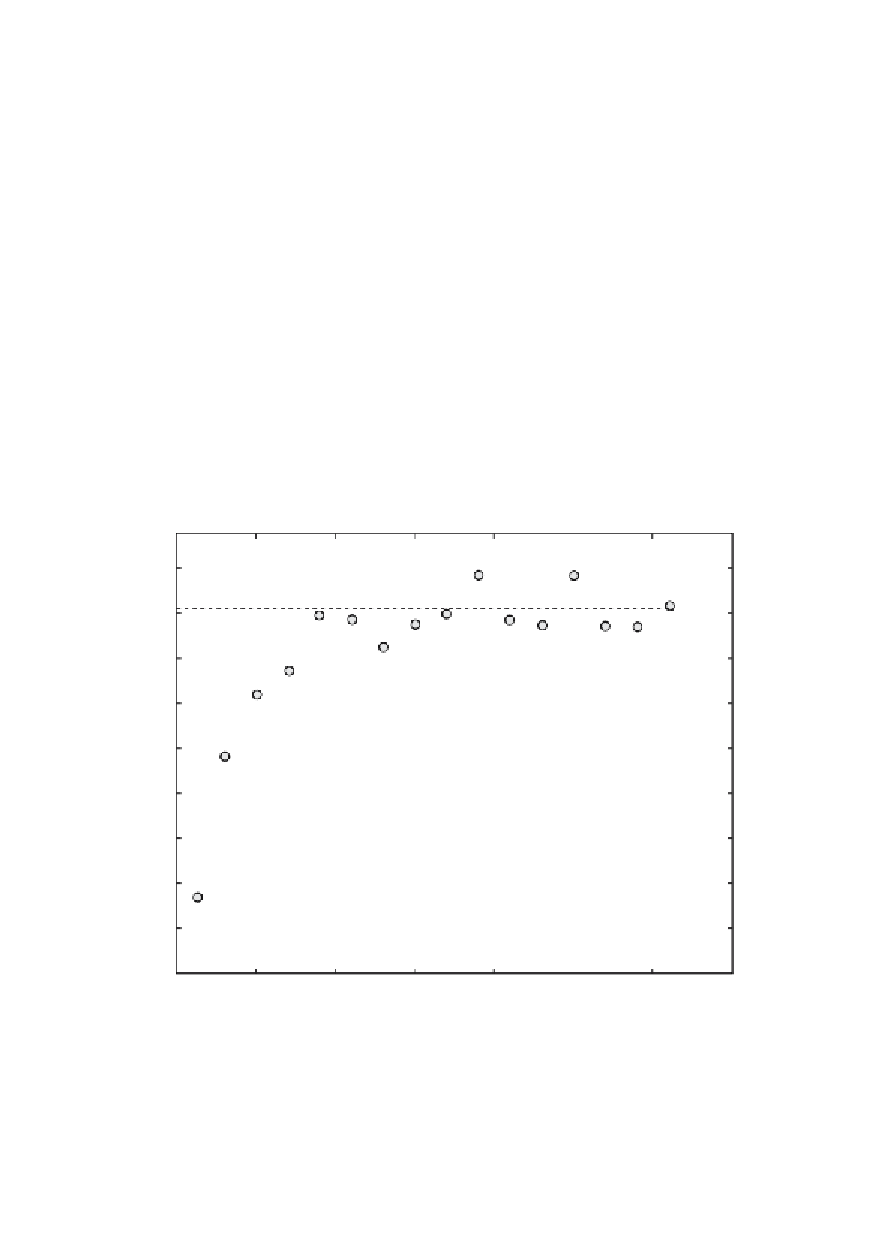Graphics Programs Reference
In-Depth Information
yl = 1.1*max(GE);
ylim([0 yl])
xlabel('lag distance')
ylabel('variogram')
hold off
The variogram in Figure 7.14 shows a typical behavior. Values are low at
small separation distances (near the origin), they are increasing with increas-
ing distances, than reaching a plateau (
sill
) which is close to the popula-
tion variance. This indicates that the spatial process is correlated over short
distances while there is no spatial dependency over longer distances. The
length of the spatial dependency is called the
range
and is defi ned by the
separation distance where the variogram reaches the sill.
The
variogram model
is a parametric curve fi tted to the variogram es-
timator. This is similar to frequency distribution fi tting (see Chapter 3.5),
where the frequency distribution is modeled by a distribution type and its
parameters (e.g., a normal distribution with its mean and variance). Due to
theoretical reasons only functions with certain properties should be used as
0.9
0.8
0.7
0.6
0.5
0.4
0.3
0.2
0.1
0
0
20
40
60
80
100
120
140
Distance between observations
Fig. 7.14
The classical variogram estimator (gray circles) and the population variance
(dashed line).

